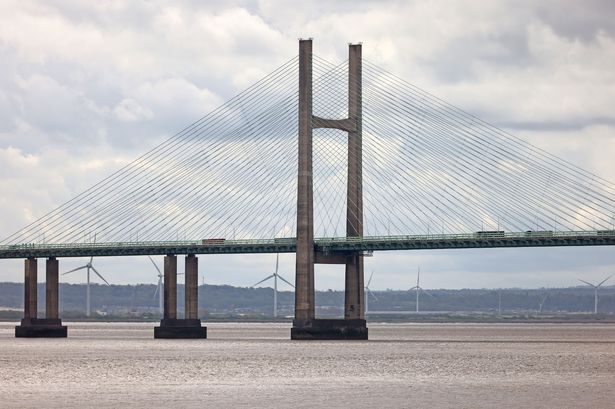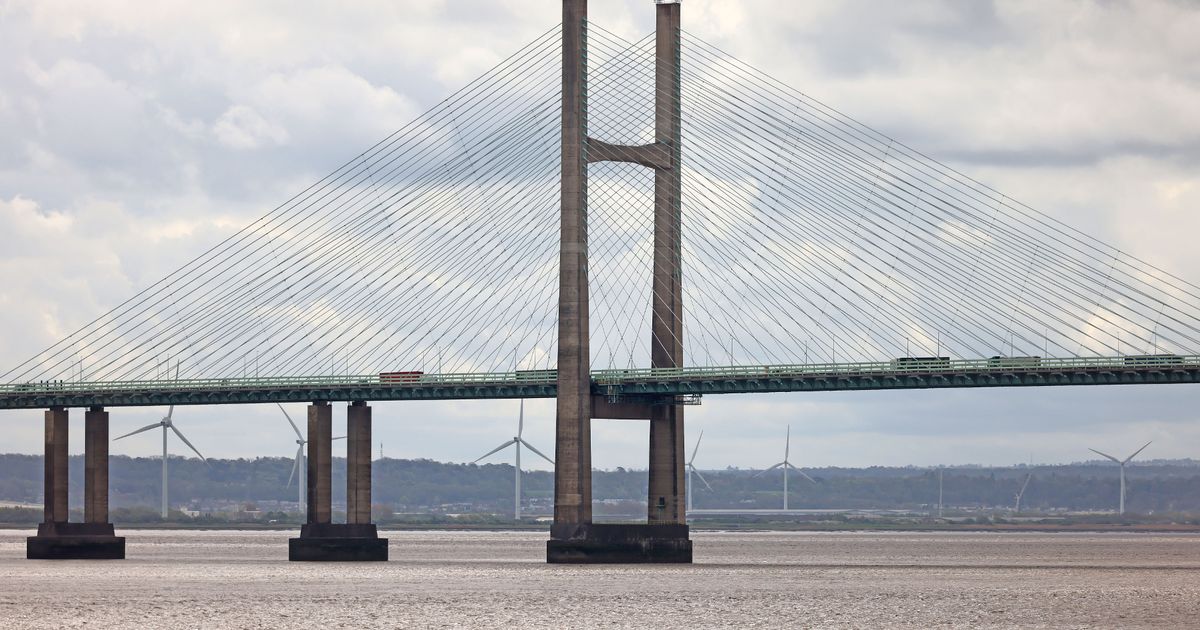A ban which stops any vehicles weighing more than 7.5 tonnes using the bridge comes into force The ban will be in force for at least 12 months (Image: John Myers)
The ban will be in force for at least 12 months (Image: John Myers)
There is concern that a major change to restrictions on the M48 Severn Bridge which comes in force on Tuesday (May 27) could cause delays for many drivers. A ban which stops any vehicles weighing more than 7.5 tonnes using the bridge means that hauliers will be forced to use the M4 Prince of Wales bridge instead.
An expert has warned that this 13-mile diversion for HGVs travelling between England and Wales could have a “huge knock-on effect for other road users” due to the M4 Prince of Wales Bridge being used by more traffic.
The ban is expected to be in place for 12 to 18 months.
The decision to ban hauliers was made after National Highways discovered the cables supporting the structure are deteriorating.
Last year, the Severn Bridge carried roughly 32,000 vehicles a day – 3,270 of which were over 7.5t. This means that around 10 per cent of traffic will be diverted via the M4 Prince of Wales Bridge once the restrictions are in place.
Confused.com car insurance expert Rhydian Jones said: “With HGVs being redirected to the M4 Severn Bridge instead, this is likely to have a huge knock-on effect for other road users, resulting in heavier traffic and delays on that popular route.
“The M4 is already one of the busiest links between Wales and England, used daily by commuters, airport travellers, and delivery drivers.
“With more large vehicles joining that route, drivers should plan for slower journeys, particularly during rush hour or busy travel periods.”
He said that drivers should consider leaving extra time for their journeys, check for travel updates and avoid travelling at peak times when possible.
He added: “The impact could also be especially noticeable for those heading to airports like Bristol or Heathrow.
“So planning ahead will be key to avoiding last-minute stress, especially if you’re working to tight schedules like flight times.”
The weight restriction has been implemented to ensure that two lanes on the M48 bridge can remain open to all other vehicles, ensure the safety of the bridge, and reduce the load on the cables.
Chris Pope, Programme Delivery Manager for National Highways, said: “Safety is our number one priority, and this weight restriction is about future-proofing the bridge for years to come.
“While the bridge remains safe, it was not designed and built for today’s levels or weight of traffic.
“Vehicles have become heavier and traffic levels have increased significantly over the last 60 years, putting greater load on the cables.
“As with all our structures, we will continue to monitor the bridge and ensure it remains safe for users.” For our free daily briefing on the biggest issues facing the nation, sign up to the Wales Matters newsletter here
The Severn Bridge first opened nearly 60 years ago, and has had to deal with ever-increasing vehicle weights and traffic numbers.
Since the tolls were removed on the bridge in 2018 there has been a 34% increase in traffic, and these changes mean a substantial increase in weight over the bridge, which it was not designed for, National Highways said.
Results of assessments of the bridge were finalised in December and revealed that the main cables are deteriorating and not as strong. Due to these results, it was recommended National Highways reduce the load on the bridge to minimise further damage.
Chris added: “We’d like to thank drivers for their support and must stress that only heavy goods vehicles below 7.5 tonnes in weight should use the bridge.
“Continued use of the bridge by heavier vehicles could ultimately see it closed to all traffic. We are acting now to prevent this from happening.”
The M48 Severn Bridge will remain open to all emergency vehicles, buses, coaches, gritters and recovery vehicles.
If there is an unplanned closure of the Prince of Wales bridge, vehicles over 7.5t will need to follow the official diversion route via the M5 and the M50.
Automatic Number Plate Recognition (ANPR) cameras are being explored to support the enforcement of the new weight restriction.
